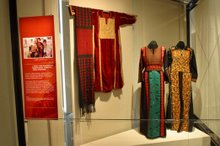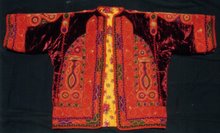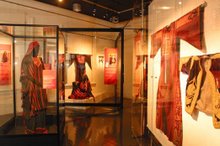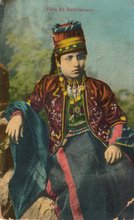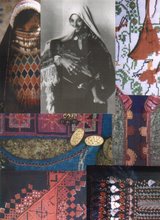 |
| Portrait of Lydie Bonfilsprivate collection documentation of Fouad Debbas, TFDC source |
To celebrate International Women's Day the British Library's Endangered Archive's blog published a very interesting post by Yasmine Chemali, grant holder of EAP644, about Lydie Bonfils and early women photographers in the Middle East.
It begins:
"Photography arrived in the Middle East in 1839, the same year that Louis-Jacques- Mandé Daguerre produced his first daguerreotype in France[1]. Félix Bonfils, a French printer who migrated from France to Beirut along with his family in 1867, established one of the first professional photographic studios in the Middle East. Very little is known about women photographers in the region. Félix’s wife, Lydie Bonfils, can be considered the first professional woman photographer in the region.
"This blog will focus on the Bonfils production and especially on the photographs that could be attributed to Lady Bonfils. The Fouad Debbas Collection, based in Beirut, Lebanon, is the most important private collection of photographs and archives of the 19th and of the first half of the 20th centuries currently conserved in the Middle East, with approximately 40 000 photographs of the region. EAP 644 is currently focusing on digitization and assessment of the Debbas Bonfils collection
"Much has been written so far about the Bonfils family and their photographic establishment in Lebanon. From the moment they moved from France (Gard) to Beirut, Lebanon, until the establishment was sold to Abraham Guiragossian in 1907, Félix (father), Lydie (mother) and Adrien (son) produced one of the largest bodies of photographic work in the Middle East...."We have several Bonfil photographs in the Archive's collection, including the one below, which is also illustrated in the post.
 |
| Group of Bedouins from Jericho c.1876-85 albumin print, Maison Bonfils TFDC_520_034_0644 source |
Establishing which member of the Bonfils family took them is tricky, and Yasmine Chemali explores this, noting:
"Traditionally, all photographs signed Bonfils were attributed to Félix, but it is now clear that both Lydie and Adrien contributed to the firm’s pictorial output. Specific authorship, however, is at best very speculative…"
 |
| Woman from Nablus c. 1876-85 albumin print attributed to Lydie Bonfils (?) TFDC_139_026_0619 source |
"Due to social conventions in the Middle East, it is presumed that Lydie made the photographs of female subject."But Lydie's role it appears was much wider. We encourage all Archive friends and Education officers to read Yasmine Chemali's beautifully researched and very interesting post, which you'll find here :)
 |
| Young woman from Lebanon c. 1876-85 albumin print attributed to Lydie Bonfils (?) TFDC_520_002_0257. source |










